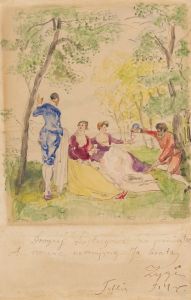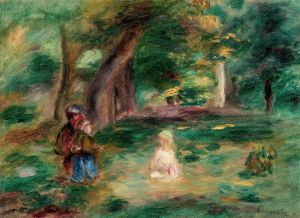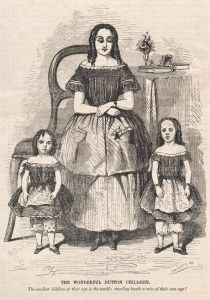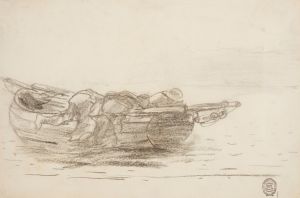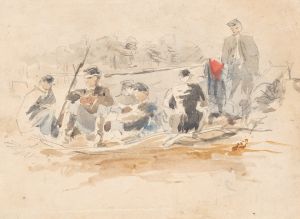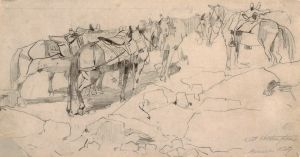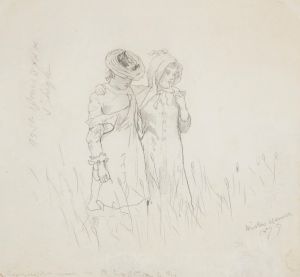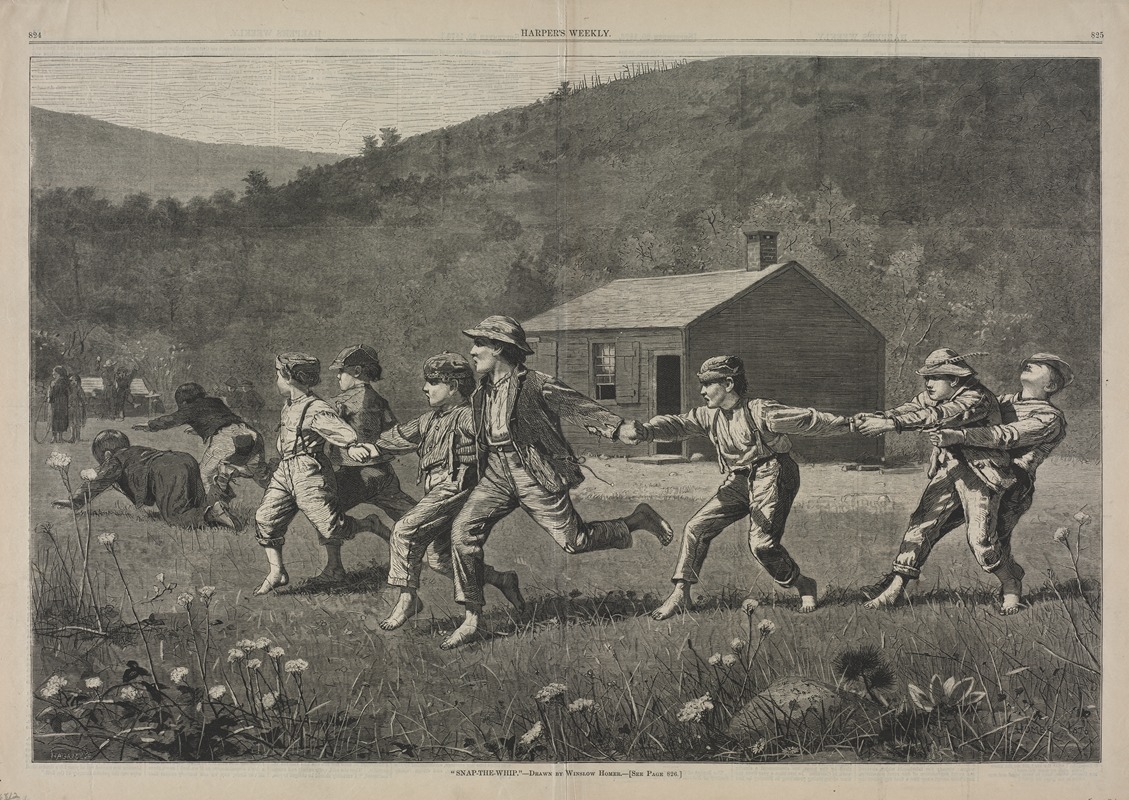
‘Snap-the-Whip’
A hand-painted replica of Winslow Homer’s masterpiece ‘Snap-the-Whip’, meticulously crafted by professional artists to capture the true essence of the original. Each piece is created with museum-quality canvas and rare mineral pigments, carefully painted by experienced artists with delicate brushstrokes and rich, layered colors to perfectly recreate the texture of the original artwork. Unlike machine-printed reproductions, this hand-painted version brings the painting to life, infused with the artist’s emotions and skill in every stroke. Whether for personal collection or home decoration, it instantly elevates the artistic atmosphere of any space.
"Snap-the-Whip" is a painting by the American artist Winslow Homer, created in 1872. This work is one of Homer's most famous and beloved pieces, capturing a nostalgic and idyllic scene of rural American life in the post-Civil War era. The painting depicts a group of young boys playing a game called "snap-the-whip" in a grassy field, with a simple red schoolhouse in the background.
Winslow Homer was known for his ability to capture the essence of American life and landscapes, and "Snap-the-Whip" is a prime example of his skill in portraying the innocence and simplicity of childhood. The game the boys are playing involves them holding hands in a line and running together, with the boy at the end of the line being whipped around by the momentum, often causing him to lose his balance and fall. This playful and dynamic scene is rendered with a sense of movement and energy that brings the moment to life.
The painting is notable for its composition and use of color. Homer employs a naturalistic palette, with the green of the grass and the blue of the sky providing a vibrant backdrop to the boys' activity. The red schoolhouse stands out against the landscape, symbolizing the importance of education and community in rural America. The figures of the boys are depicted with a keen attention to detail, each one individualized yet part of the cohesive group, emphasizing themes of camaraderie and collective experience.
"Snap-the-Whip" reflects the broader cultural context of its time. In the years following the Civil War, there was a national yearning for a return to simpler, more innocent times. Homer's painting evokes this sentiment, offering a vision of childhood that is free from the complexities and hardships of adult life. It also highlights the rural American experience, which was rapidly changing due to industrialization and urbanization.
The painting was first exhibited at the National Academy of Design in New York City in 1872, where it received positive reviews for its charming subject matter and technical execution. Today, "Snap-the-Whip" is housed in the collection of the Metropolitan Museum of Art in New York City, where it continues to be admired by visitors for its timeless depiction of youthful exuberance and rural simplicity.
Winslow Homer (1836-1910) was a self-taught artist who began his career as an illustrator before turning to painting. He is considered one of the foremost painters in 19th-century American art, known for his landscapes, seascapes, and depictions of everyday life. Homer's work is characterized by its realism, attention to detail, and ability to convey the emotional essence of his subjects.
In summary, "Snap-the-Whip" by Winslow Homer is a quintessential representation of American childhood and rural life in the late 19th century. Its enduring appeal lies in its masterful composition, vibrant use of color, and the universal themes of play, community, and nostalgia that it so beautifully captures.





